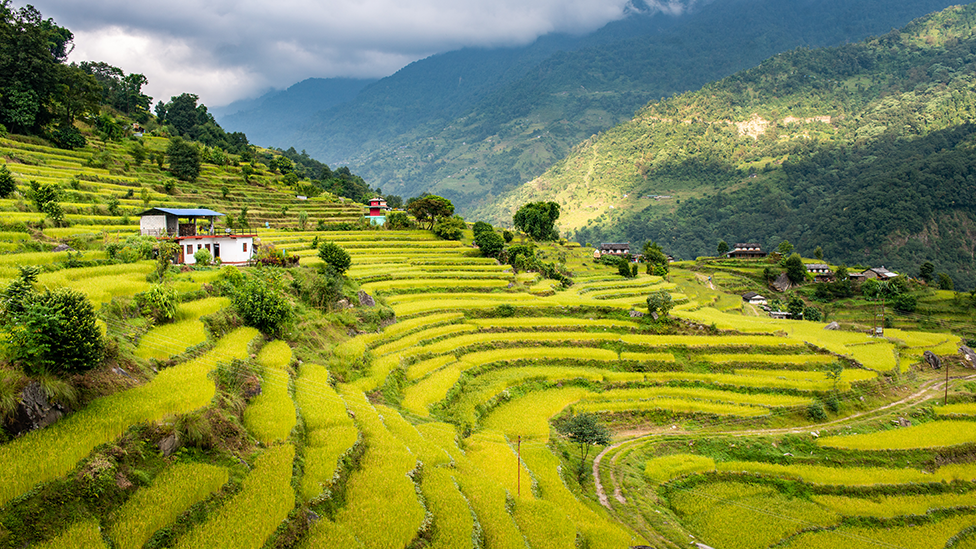Food: Bangor researcher helps saves crucial Nepalese rice crop
- Published

Jumli Marshi rice is a nutritious staple growing at high altitude in Nepal
A type of rice that feeds five million families in South East Asia has been saved from extinction, the developer of disease-resistant varieties has said.
Jumli Marshi rice is a highly nutritious staple for people in Nepal, Pakistan and India, but the ancient variety is susceptible to disease.
Bangor University's Prof John Witcombe has helped farmers in Nepal to save it.
He called it "the culmination of 13 years' work in collaboration with Nepalese rice breeder Resham Amgai".
"A disease-resistant Jumli Marshi will be a game changer for farmers in this challenging high-altitude rice growing environment," he added.
The sweet, pinkish-coloured rice is grown at 10,000 ft above sea level in western Nepal.
It is high in fibre, proteins and minerals such as iron, calcium and phosphorous, and is considered suitable for people living with diabetes.
But Nepalese farmers have had to switch to other crops because the variety, thought to have been first cultivated 550 years ago, was threatened by major plant disease blast fungus.
Working with indigenous farmers, plant breeding expert Prof Witcombe, was able to introduce a gene first developed in the Philippines in the 1980s to make three disease-resistant varieties of Jumli Marshi.
"The farmers of Jumla have been lobbying to preserve the local variety and this development has been welcomed," he said.
Related topics
- Published18 June 2023
- Published4 June 2023
- Published23 March 2023